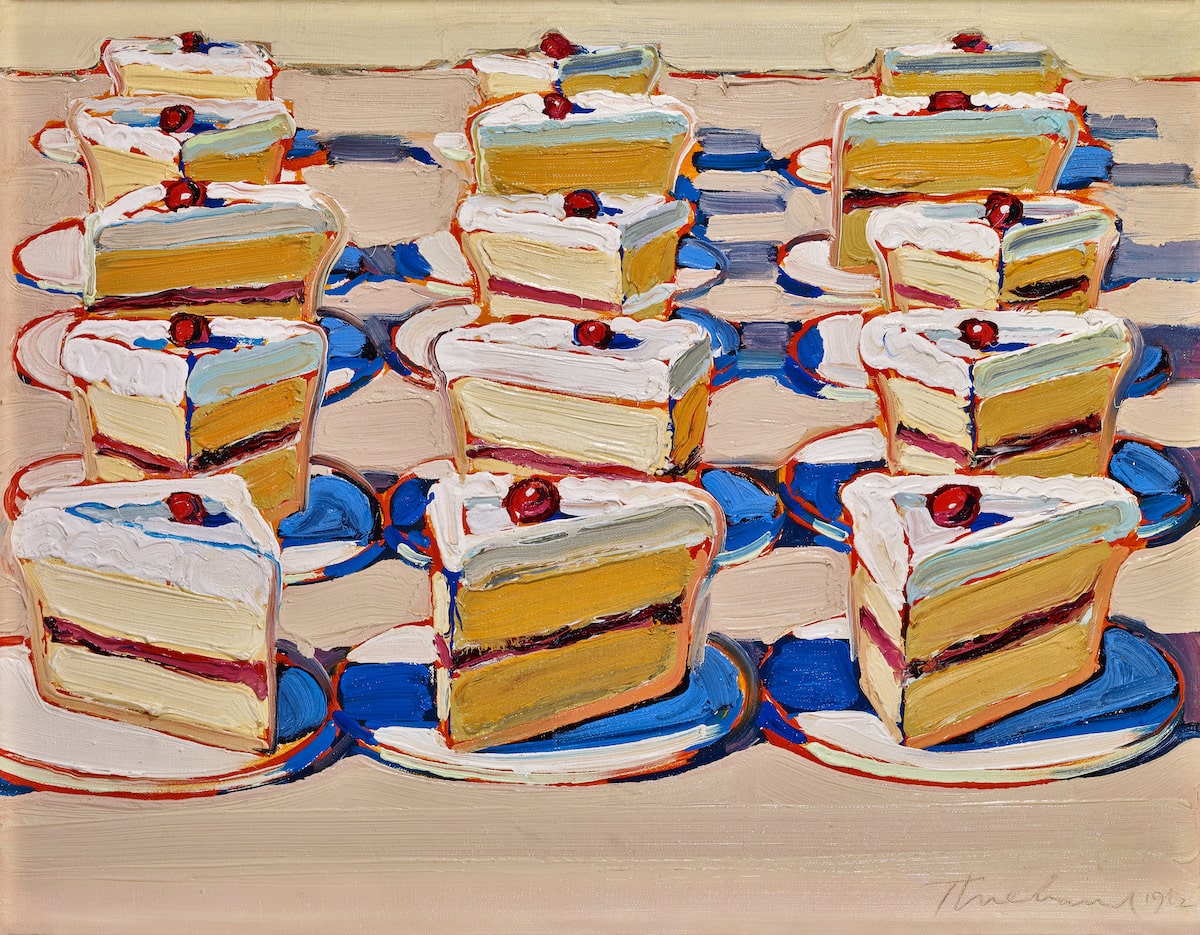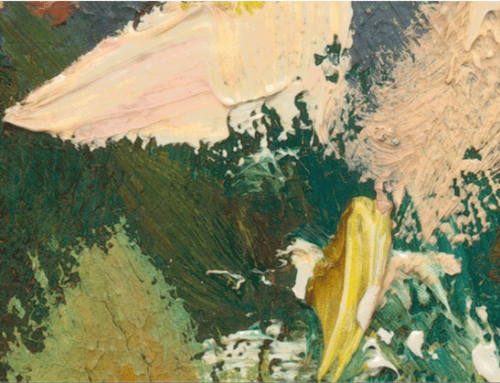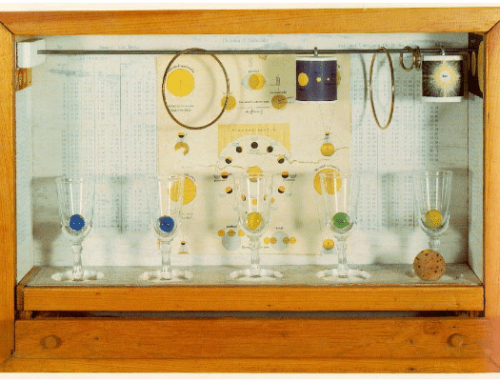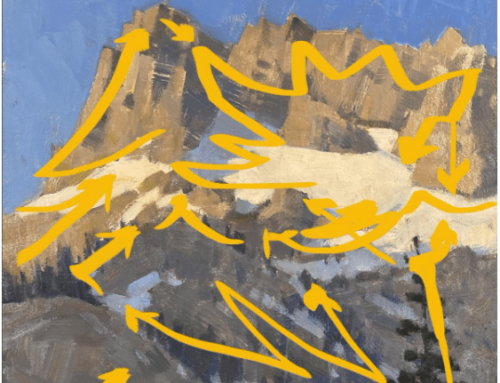Wayne Thiebaud: A Celebration, 1920–2021, is on view at the Crocker Art Museum in Sacramento, CA from May 29 – August 7, 2022.
Wayne Thiebaud is the painting-lover’s Pop Artist. Thibaud, who died in December at the age of 101, was part of the Pop Art movement that came out of the 1960s.
Peers such as Andy Warhol and Roy Lichtenstein flattened their images on silkscreens their assistants could make in an effort to minimize the artist’s hand, thereby emphasizing the dehumanization of commercial art and life in modern America. Thibaud’s work, like the best-known Pop Art, mirrors back the bright colors and assembly-line character of American production. But Thiebaud does it with a painterly joy the others lacked, with ribbons and ropes of thickly applied paint, coating his lunch-counter cakes and creme pies, for example, with lush, frosting-like swaths of color.
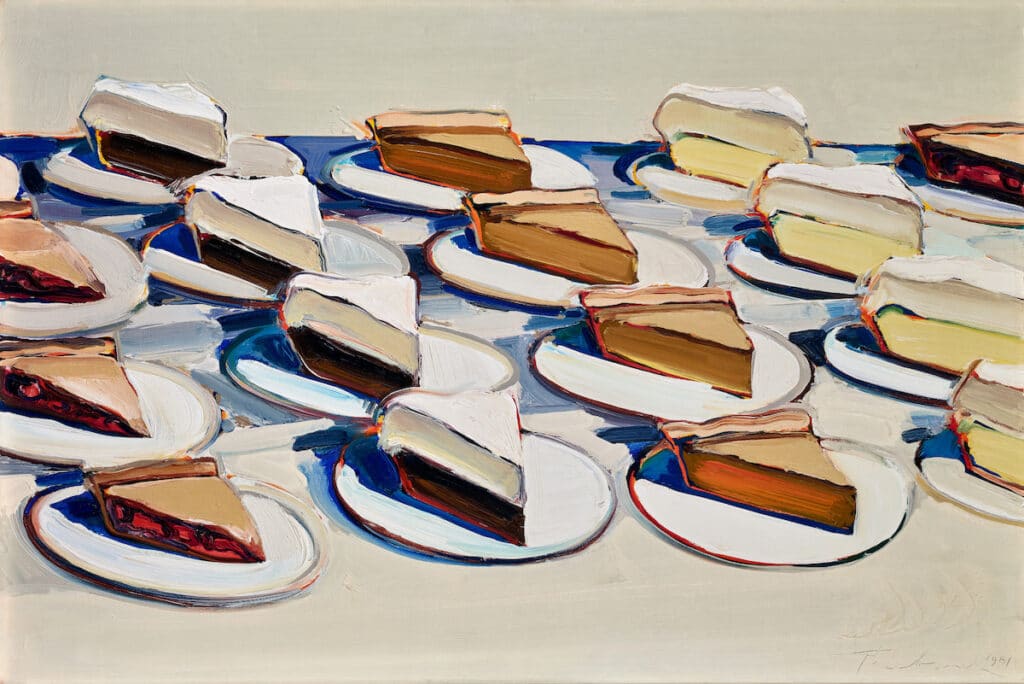
Wayne Thiebaud, Pies, Pies, Pies, 1961. Oil on canvas, 20 x 30 in. Crocker Art Museum, gift of Philip L. Ehlert in memory of Dorothy Evelyn Ehlert, 1974.12. © Wayne Thiebaud / Licensed by VAGA at Artists Rights Society (ARS), NY.
“Wayne Thiebaud changed the way we think about what art can be and about how we see ourselves,” says Scott A. Shields, Ph.D., the Crocker’s inaugural Ted and Melza Barr Chief Curator and Associate Director. “Those of us in Sacramento think of him as our own, but Thiebaud was truly America’s artist, and his work was beloved internationally. His canvases are some of the most important paintings ever made in California, and they possess an enduring interest, combining nostalgia and optimism, loneliness and isolation. He has left us an incredible legacy of art that will never be forgotten.”
Wayne Thiebaud: A Celebration is the largest survey of Thiebaud’s work in 20 years and includes 117 works, 99 from the original exhibition, and another 17 drawings recently donated to the Crocker by the Wayne Thiebaud Foundation and a pastel given by Anna Barbour Francis.
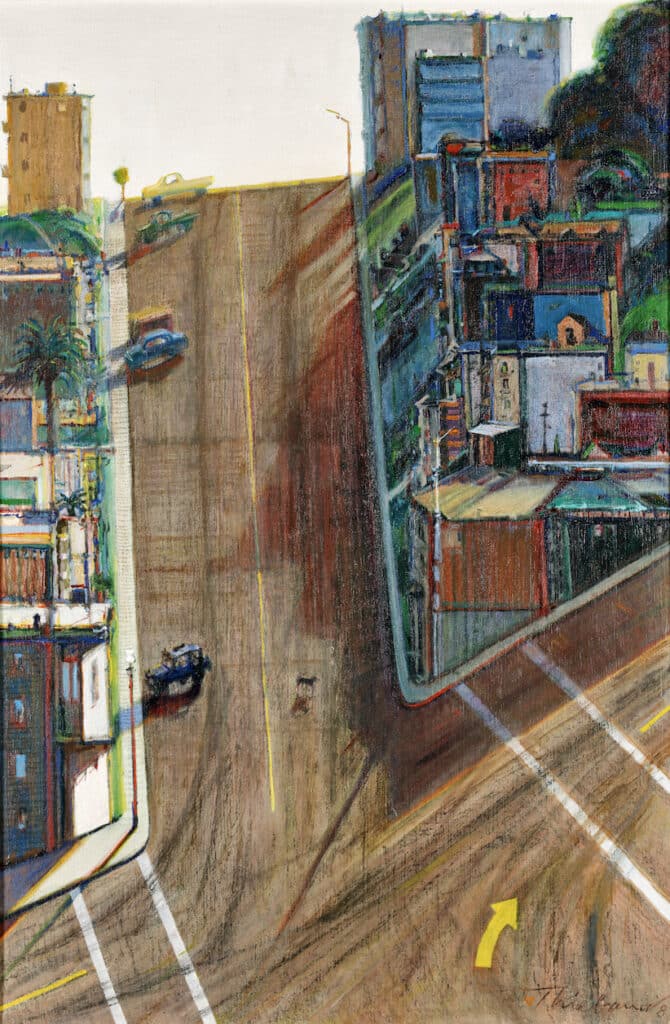
Wayne Thiebaud (American, 1920–2021), Street and Shadow, 1982–1983/1996. Oil on linen, 35 3/4 x 23 3/4 in. Crocker Art Museum, gift of the Artist’s family, 1996.3. © Wayne Thiebaud / Licensed by VAGA at Artists Rights Society (ARS), NY.
The exhibition follows the artist’s career beginning in the 1940s, just a few years after Thiebaud came to the Sacramento region and became a cartoonist for the United States Army Air Forces while stationed at Mather Field Air Force Base. Among the works on view are many of the subjects for which Thiebaud is best known and loved, including sweet treats, paintings of people, urban and agricultural landscapes respectively of San Francisco and the Sacramento Valley, and the artist’s final body of work, circus clowns.
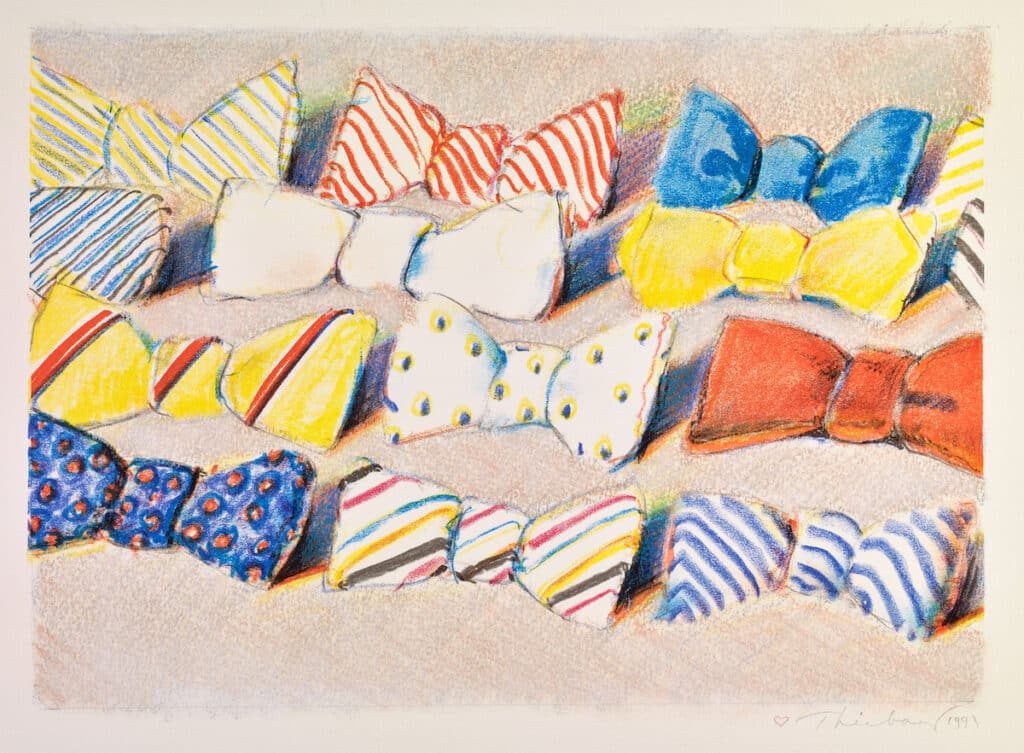
Wayne Thiebaud, Bow Ties, 1993. Color lithograph hand-worked with pastel, 9 7/8 x 13 5/8 in. Crocker Art Museum, gift of the Artist’s family, 1995.9.38. © Wayne Thiebaud / Licensed by VAGA at Artists Rights Society (ARS), NY.
“This exhibition truly celebrates the Crocker’s long history with Wayne Thiebaud. From his first solo exhibition in 1951 to the short run of our 2020 exhibition aligned with his 100th birthday, we’re honored to have been a part of bringing this outstanding artist to the world,” remarks Lial A. Jones, Mort and Marcy Friedman Director and CEO. “We hope that Wayne Thiebaud: A Celebration, particularly with the new works from Wayne himself, will effectively commemorate thesuccessful career and rich life of our very dear friend.”
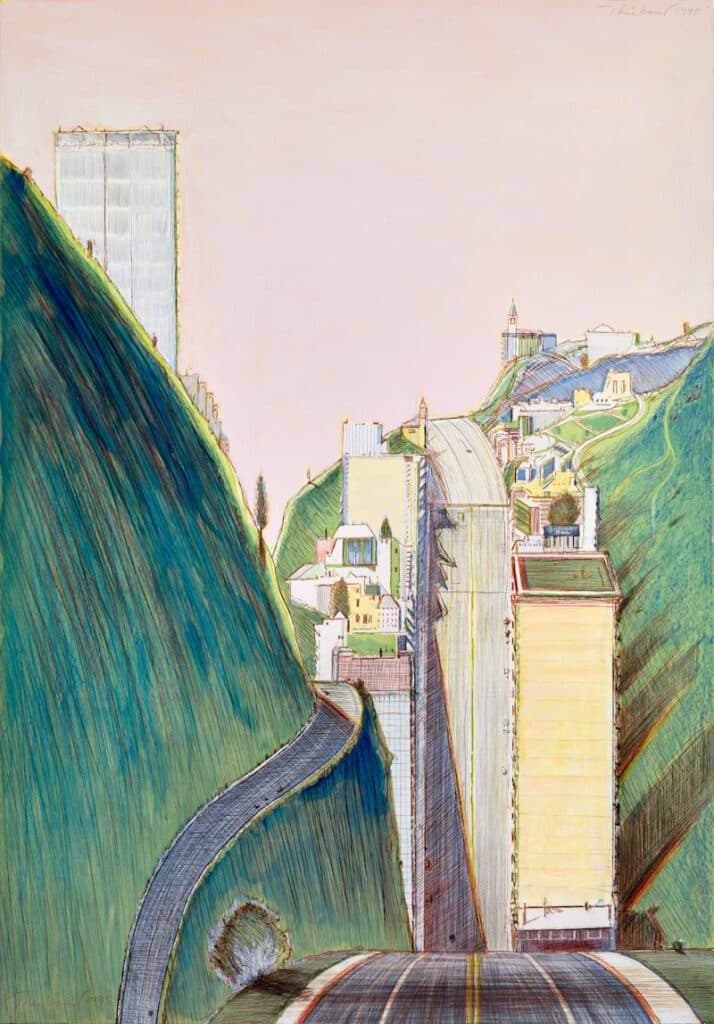
Wayne Thiebaud, Park Place, 1995. Color etching hand-worked with watercolor, gouache, colored pencil, graphite, and pastel, 29 9/16 x 20 3/4 in. Crocker Art Museum, gift of the Artist’s family, 1995.9.50. © Wayne Thiebaud / Licensed by VAGA at Artists Rights Society (ARS), NY.
The exhibition run overlaps with that of Twinka Thiebaud and the Art of the Pose (on view June 19 – September 11, 2022), which explores the art-modeling career of Twinka Thiebaud, Wayne Thiebaud’s daughter, who posed for some of the most important photographers and artists of the twentieth and twenty-first centuries, including her father who is represented by 13 works in the show.
How Modern was Monet?
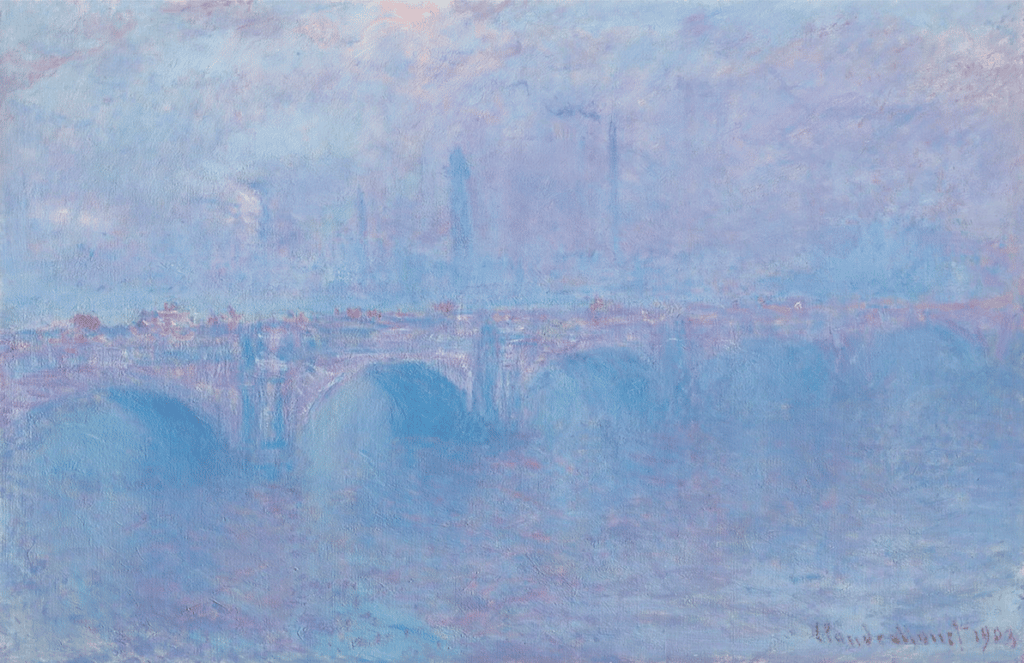
Claude Monet, Waterloo Bridge, effet de brume, 1895
Don’t buy the mousepad or the mug, just know that Monet was a radical and subversive artist. Monet’s work massively influenced the abstract art movements from the mid-twentieth-century on.
Monet’s Waterloo Bridge, effet de brume was a highlight of Christie’s London Evening Sale on June 28. the painting sold for £30.05 million (US$36.8 million), which was about $9 million higher than Christie’s estimate.
Depicting the Thames under an effervescent sunlit haze, it’s part of a series in which Monet reveled in London’s ever-changing atmosphere and the play of light across the Thames through three principal subjects – Charing Cross Bridge, the Houses of Parliament, and Waterloo Bridge. In contrast to the bustling modernity of the Charing Cross paintings and the solemn grandeur of the Houses of Parliament compositions, Monet’s views of Waterloo Bridge stand as pure meditations on color, light, and atmosphere, evocatively capturing the shifting character of the famous bridge under varying weather conditions at different times of the day.

Joe Goode, Ocean Blue #6, 1988
Compare Monet’s Waterloo Bridge with a work from Joe Goode’s Ocean Blue series. First recognized for his Pop Art milk bottle paintings and cloud imagery, Goode’s work was included along with Wayne Thibaud, Roy Lichtenstein, Andy Warhol, Jim Dine, Edward Ruscha and others in the 1962 ground-breaking exhibit New Paintings of Common Objects at the Pasadena Art Museum (now Norton Simon Museum). This historical exhibition was the first museum Pop Art exhibition in the United States. It’s a very different painting from Monet’s, but it too revels in atmosphere and color – the 1988 painting would be unthinkable if Monet hadn’t astonished the world with his lyrical genius nearly 100 years earlier. Onward and upward.
In the paint,
Chris

